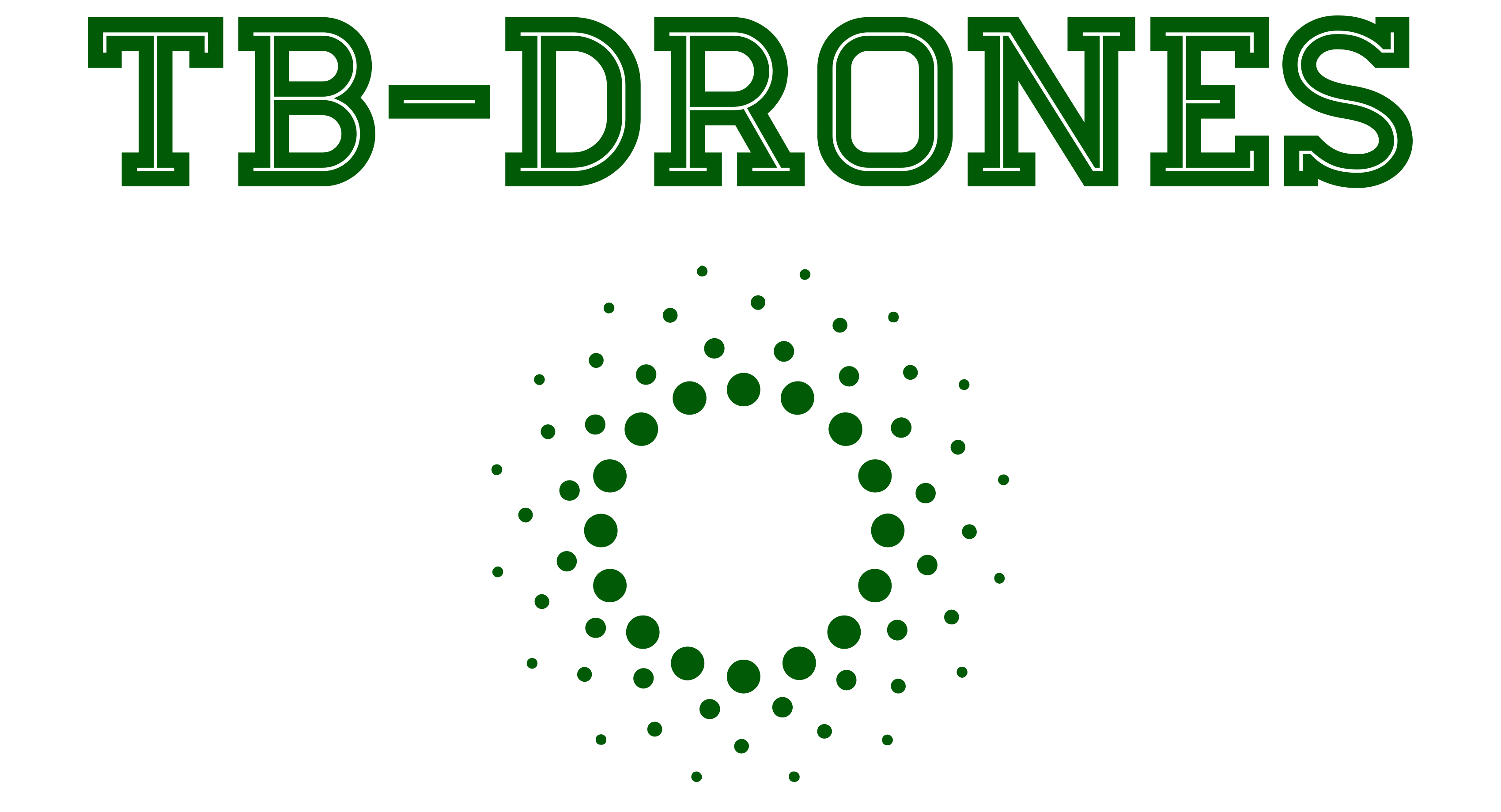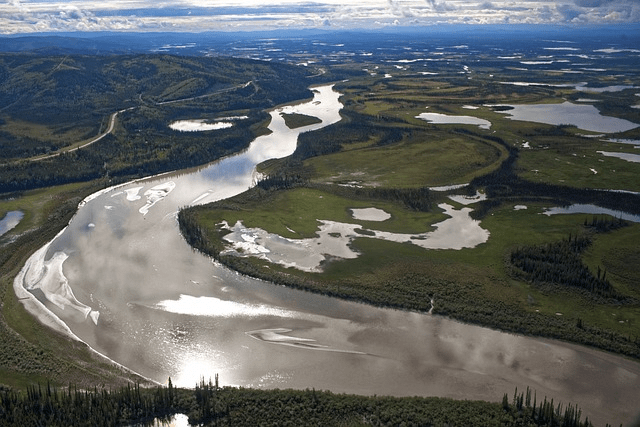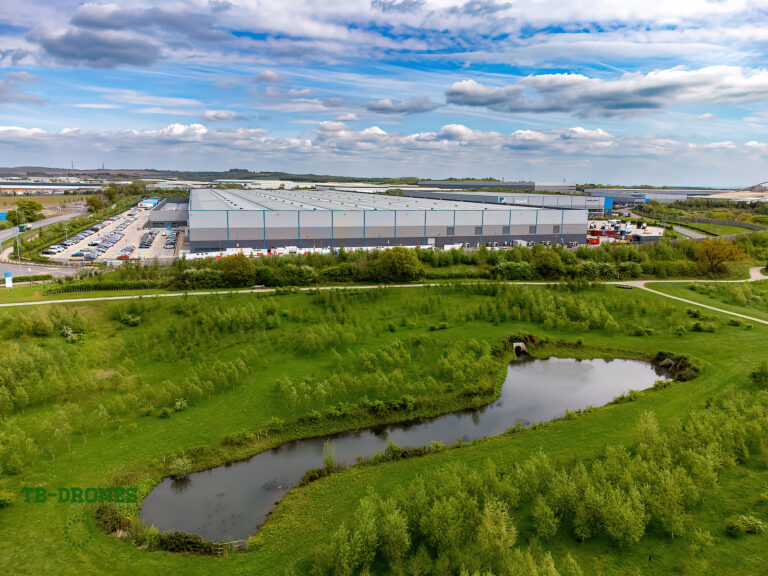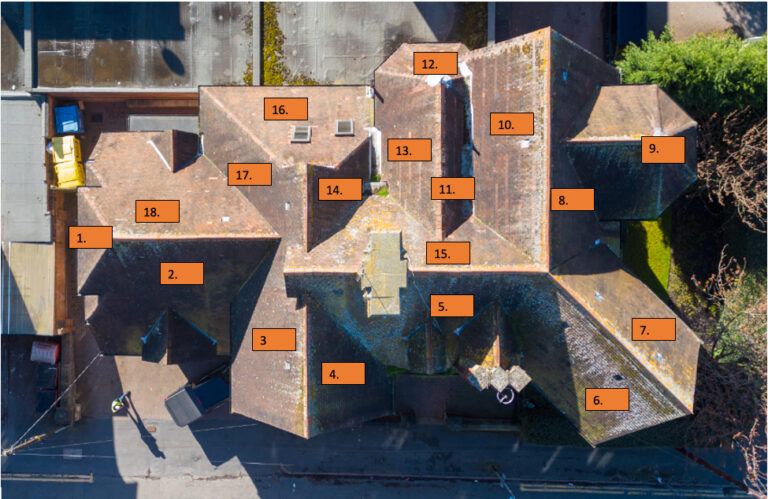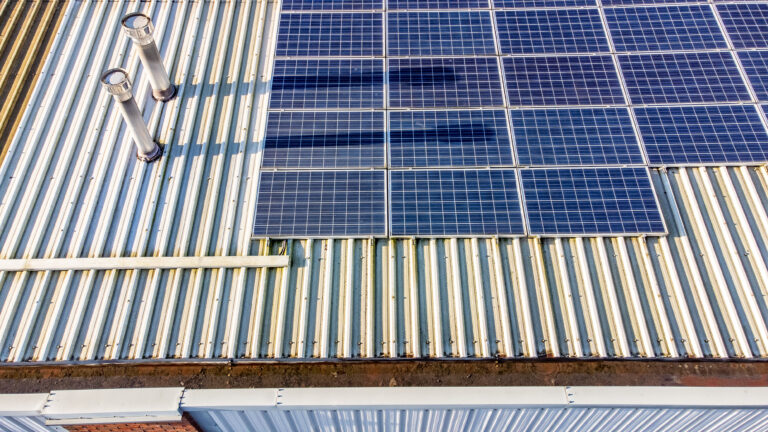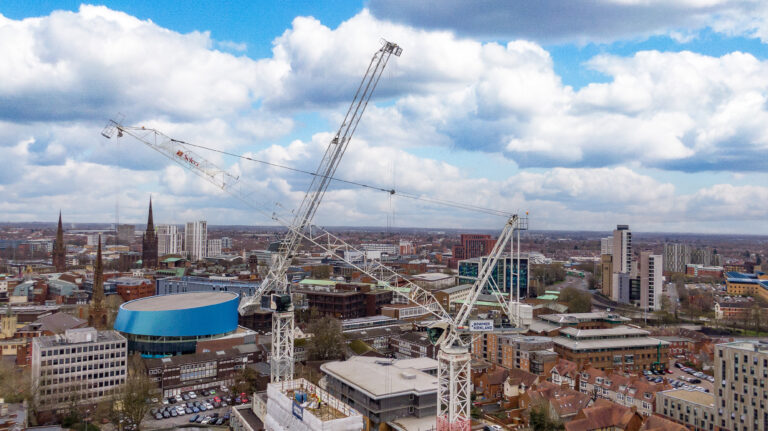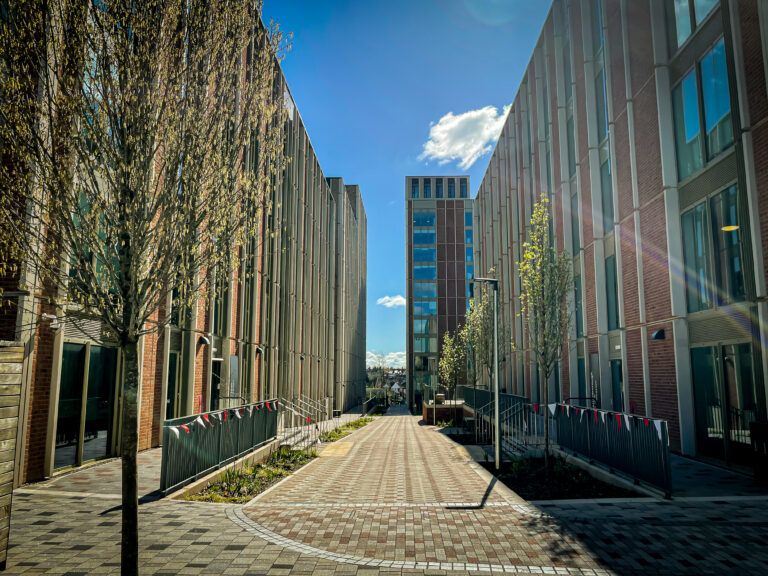Commercial drone photography has emerged as a powerful tool for brands to capture stunning aerial imagery and showcase their products or services uniquely and captivatingly. With the ability to provide a bird’s-eye view of landscapes, buildings, events, and more, commercial drone photography offers a whole new perspective for brand promotion.
In this ultimate guide, we will explore the advantages of commercial drone photography and why it is an excellent choice for enhancing your brand’s visual presence. We will also delve into the legal considerations surrounding drone usage, including understanding drone regulations in the UK and obtaining the necessary licenses and permits.
Choosing the suitable drone and equipment is crucial for achieving professional results in commercial drone photography. We will provide essential tips and factors to consider when selecting a drone and the necessary equipment to capture stunning aerial shots.
Before embarking on a drone photoshoot, proper planning and preparation are essential. We will guide you in selecting suitable locations and subjects and check weather conditions and flight restrictions to ensure a successful and safe drone operation.
To master the art of drone photography, understanding camera settings, shooting modes, and composition techniques is critical. We will provide insights into capturing breathtaking aerial shots, including tips on framing, utilizing motion, and creating dynamic compositions.
Once you have captured your stunning aerial imagery, post-processing and editing techniques play a crucial role in achieving professional results. We will explore essential editing techniques for drone photography, including colour correction, enhancements, and adding special effects and filters.
Finally, we will discuss how you can effectively promote and showcase your brand using drone photography. From creating engaging marketing materials to utilizing drone imagery on social media and websites, this guide will help you leverage the power of drone photography to elevate your brand to new heights.
By the end of this comprehensive guide, you will have all the knowledge and tools you need to harness the potential of commercial drone photography and take your brand imagery to the next level.
Why Choose Commercial Drone Photography for Your Brand?
Commercial drone photography can be valuable for enhancing your brand and staying ahead of the competition. Here are some reasons why you should choose commercial drone photography for your brand:
– Increased visibility: Aerial photographs and videos captured by drones provide a unique perspective, allowing your brand to stand out and attract attention. They offer a visually stunning way to showcase your products or services.
– Engaging content: Incorporating drone footage in your marketing strategy can significantly boost viewer engagement. It adds excitement and captivates the audience with dynamic shots that are impossible with traditional photography or videography.
– Versatility: Drones can capture images from various angles, heights, and distances, allowing you to showcase your brand in different settings. Whether outdoor landscapes, architectural structures, or significant events, drones can capture it all.
– Cost-effectiveness: Opting for commercial drone photography can be more cost-effective than hiring helicopters or cranes for aerial shots. Drones are more affordable and efficient, allowing you to achieve professional-level results on a limited budget.
– Unique branding opportunity: Using commercial drone photography, you can create a distinctive visual identity for your brand. Aerial shots provide a sense of grandeur, professionalism, and innovation, giving your brand a competitive edge.
– Differentiation: Commercial drone photography sets you apart from competitors in a crowded market. It shows that you are willing to go the extra mile to deliver unique and compelling content that resonates with your target audience.
By choosing commercial drone photography, you can elevate your brand’s image, engage your audience, and create a lasting impression. Embrace this innovative technology to showcase your brand visually stunningly and captivatingly.
What are the Advantages of Commercial Drone Photography?
- Unique Perspectives: Commercial drone photography offers the advantage of capturing unique perspectives and angles that are not easily achievable with traditional photography. Drones can fly at various heights and positions, allowing for breathtaking aerial shots that can showcase your brand in a visually compelling way.
- High-Quality Imaging: Drones with high-resolution cameras can capture stunning, professional-grade images and videos. This ensures that your brand’s visuals are of the highest quality, creating a solid and impactful impression on your target audience.
- Creative Content: The versatility of drones allows for creative experimentation in capturing images and videos. You can explore different compositions, angles, and movements to create visually captivating and engaging content that sets your brand apart.
- Cost-Effective: Compared to traditional aerial photography methods such as helicopters or aeroplanes, commercial drone photography is a more cost-effective option. Drones are more affordable to hire or purchase, reducing the overall production costs while delivering exceptional results.
- Efficient Workflow: Drones are agile and can quickly manoeuvre through different locations, enabling efficient and timely capture of images and videos. This helps save time and resources, allowing for a smoother workflow and faster project turnaround.
Legal Considerations for Commercial Drone Photography
Legal Considerations for Commercial Drone Photography When it comes to commercial drone photography, it is crucial to consider the legal aspects. This section will examine the details of navigating drone regulations in the UK and acquiring the required licences and permits for commercial drone photographers. Whether you are an aspiring aerial photographer or a business owner aiming to enhance your brand, understanding the legal aspects of commercial drone photography is vital.
Understanding Drone Regulations in the UK
commercial drone photography. Here are some important points to consider: 1. Drone registration: In the UK, all drones weighing 250 grams or more need to be registered with the Civil Aviation Authority (CAA). This registration ensures that operators are aware of their responsibilities and can be held accountable for their drone’s use. 2. Flight restrictions: There are several restricted areas where drones are not allowed to fly, such as near airports, military installations, and crowded public spaces. It is essential to familiarise yourself with these restrictions and plan your flights accordingly to ensure compliance with the regulations. 3. Operating limitations: The CAA sets specific rules regarding where and how high a drone can be flown. For example, drones must not be flown above 400 feet (120 meters) and should always be within the operator’s visual line of sight. Adhering to these limitations is essential for safe and legal drone operations. 4. Drone insurance: It is advisable to have appropriate insurance coverage for your drone photography activities. This protects you from any potential liability in case of accidents or damage caused by your drone. 5. Keep updated with regulations: Drone regulations are subject to change, so it is essential to stay informed about any updates or new requirements. Regularly check the CAA website or other reliable sources for the latest information. Pro-tip: Consider joining a professional drone organization or community in the UK. They often provide valuable resources, support, and updates on regulations, helping you navigate the legal requirements for commercial drone photography effectively.
Obtaining the Necessary Licenses and Permits
To obtain the necessary licences and permits for commercial drone photography in the UK, follow these steps:
- Familiarise yourself with the drone regulations in the UK. Understand the rules and restrictions imposed by the Civil Aviation Authority (CAA) regarding drone operations.
- Complete the necessary training and obtain the appropriate qualifications. You may need to pass a theory test and practical assessment to demonstrate your competence in piloting a drone.
- Register your drone with the CAA. All drones weighing over 250 grams must be registered, and you will receive an operator ID that must be displayed on your drone.
- Apply for a Permission for Commercial Operations (PfCO) from the CAA. This involves submitting an operations manual and demonstrating your understanding of safety procedures.
- Upon approval of your PfCO application, you will receive an Operational Authorization from the CAA, allowing you to legally conduct commercial drone flights.
- Ensure that you adhere to the conditions and restrictions outlined in your Operational Authorization. Failure to comply with these conditions may result in the suspension or revocation of your permission.
- Keep your licences and permits up to date. Stay informed of any regulatory changes and regularly renew your certifications and approvals as required by the CAA.
John, a photographer, decided to start offering drone photography services for real estate agents. He followed the necessary steps to obtain the necessary licences and permits. After completing the required training and registering his drone, he applied for a PfCO from the CAA. John meticulously prepared an operations manual and successfully demonstrated his knowledge during the assessment. Soon, he received his Operational Authorization, allowing him to legally offer his services. By obtaining the necessary licences and permits, John ensured that he operated within the law, gained the trust of his clients, and elevated his brand in the competitive drone photography market.
Tips for Choosing the Right Drone and Equipment
When it comes to commercial drone photography, choosing the right drone and equipment is crucial for capturing breathtaking aerial shots. This section provides valuable tips to help you make informed decisions. We will discuss factors to consider when selecting a drone, essential equipment for professional results, and planning and preparation tips for your drone photoshoots. Get ready to enhance your brand with the perfect tools for the job!
Factors to Consider When Selecting a Drone
When selecting a drone for commercial photography, there are several factors to consider:
- Budget: Determine how much you are willing to invest in a drone. Prices can vary greatly depending on the features and capabilities you require.
- Camera Quality: The quality of the camera is essential for capturing high-resolution photos and videos. Look for drones with cameras that meet your specific requirements.
- Flight Time: Consider the drone’s battery life and flight time. Longer flight times are advantageous, allowing for more opportunities to capture the perfect shot.
- Range and Stability: Look for drones that offer a good range of control and stability, as this will ensure smooth and precise flying, resulting in better footage.
- Portability: If you plan on travelling with your drone, consider its size and weight. Compact and lightweight drones are easier to transport.
- Safety Features: Ensure the drone has safety features such as obstacle avoidance and return-to-home capabilities to prevent accidents and protect your investment.
- Expandability: Consider whether the drone allows for additional accessories or modifications, such as interchangeable lenses or filters.
Fact: The DJI Mavic 2 Pro is a popular choice among professional photographers and videographers due to its high-quality camera, long flight time, and advanced features.
Essential Equipment for Commercial Drone Photography
Essential Equipment for Commercial Drone Photography
The essential equipment for commercial drone photography includes:
- A reliable and capable drone: Choose a drone that is suitable for your specific needs, taking into consideration factors such as flight time, camera quality, and stability during flight.
- High-resolution camera: Invest in a high-quality camera that can capture clear and detailed images and videos from the air.
- Spare batteries and memory cards: Ensure you have enough spare batteries and memory cards to prolong your drone’s flight time and capture a sufficient amount of footage without interruptions.
- Remote controller: Use a remote controller that allows precise control over the drone’s movements, including the ability to adjust camera settings and capture shots.
- Propeller guards: Install propeller guards to protect your drone’s propellers from damage during flights, especially in indoor or confined spaces.
- Gimbal stabilizer: Use a gimbal stabilizer to minimize camera shake and vibrations, resulting in smoother and more professional-looking footage.
- Filters: Apply different filters to your camera lens to enhance the quality and impact of your aerial images, such as polarizing filters for reducing glare or ND filters for balanced exposure.
- Transportation case: Invest in a durable and secure transportation case to protect your drone and equipment while on the go.
One professional drone photographer, John, had an assignment to capture breathtaking aerial shots of a scenic landscape for a travel magazine. He made sure to bring his essential equipment for commercial drone photography, including a reliable drone with a high-resolution camera and spare batteries. As he flew the drone over rolling hills and sparkling lakes, he used the remote controller to adjust the camera settings and framing for stunning shots. Thanks to the gimbal stabilizer, the footage was incredibly smooth, allowing John to capture the beauty of the landscape with precision. With the help of filters, he enhanced the colors and contrast, creating captivating images that showcased the destination’s natural splendor. John’s attention to detail and the use of essential equipment resulted in breathtaking photographs that truly elevated the brand’s visual storytelling.
Planning and Preparing for a Drone Photoshoot
Planning and Preparing for a Drone Photoshoot
Planning and preparing for a drone photoshoot involves several important steps to ensure a successful aerial photography session:
- Selecting suitable locations and subjects: Identify the areas or subjects you want to capture from above. Consider factors such as lighting, scenery, and the overall aesthetic appeal.
- Checking weather conditions and flight restrictions: Prior to the photoshoot, monitor weather conditions to ensure there are no strong winds, rain, or adverse weather that could affect the drone’s flight. Research and understand any flight restrictions or no-fly zones in the intended area.
By following these steps, you can plan and prepare effectively for a drone photoshoot, ensuring optimal conditions and capturing stunning aerial shots for your brand.
Selecting Suitable Locations and Subjects
When selecting suitable locations and subjects for your drone photography, it is important to consider the following:
- Scenic beauty: Look for locations that have stunning landscapes, such as mountains, beaches, and forests. These natural settings can provide a beautiful backdrop for your aerial shots.
- Architectural marvels: Urban areas with iconic buildings, bridges, or landmarks can add an interesting element to your drone photographs. Capture the unique features and intricate details from a different perspective.
- Historical significance: Choose locations with historical significance, such as ancient ruins, castles, or archaeological sites. These locations can tell a story and add a sense of depth to your images.
- Colourful events: Consider photographing events and festivals that are known for their vibrant colours and lively atmosphere. Capture the energy and excitement from above.
- Natural wonders: Seek out natural wonders like waterfalls, canyons, or lakes. These locations can offer breathtaking views and create a sense of awe in your photographs.
- Wildlife habitats: If you are interested in wildlife photography, find locations where you can capture animals in their natural habitats. Observe and respect their behaviour from a distance.
One photographer, while looking for suitable locations for his drone photography, stumbled upon a hidden gem – a secluded beach known only to the locals. With his drone, he was able to capture the pristine beauty of the beach, the crystal-clear waters, and the untouched shoreline. His photographs went viral on social media, attracting attention from travel bloggers and outdoor enthusiasts. This unexpected discovery not only elevated his brand but also brought attention to this hidden paradise, enticing people to visit and experience its raw beauty for themselves.
Checking Weather Conditions and Flight Restrictions
When it comes to commercial drone photography, it is crucial to check weather conditions and flight restrictions for a successful and safe photoshoot.
- Weather conditions: Before taking your drone out for a photoshoot, it’s important to check the weather forecast. Strong winds, rain, or fog can affect the stability and visibility of the drone, making it difficult to capture high-quality aerial shots. Ideal weather conditions include clear skies, calm winds, and good lighting for optimal results.
- Flight restrictions: It’s essential to be aware of any flight restrictions in the area where you plan to fly your drone. Certain locations may have restricted airspace due to airports, military bases, or other sensitive areas. Some areas might require specific permits or authorizations to fly a drone. Checking for any flight restrictions ensures compliance with regulations and prevents any legal issues or risks during the photoshoot.
- Pre-flight checklist: Before taking off, ensure that you have completed a pre-flight checklist. This includes checking the drone’s battery level, GPS signal strength, and overall condition. It’s also important to calibrate the compass to ensure accurate flight navigation. By following a pre-flight checklist, you can minimize the chances of technical issues or unexpected failures during the shoot.
- Safety precautions: Safety should always be a top priority when operating a drone. Avoid flying near people, animals, or structures that could be at risk in case of an accident. Be mindful of your surroundings and maintain a safe distance from obstacles to prevent any collisions. Adhering to safety guidelines and using common sense will help ensure a smooth and incident-free drone photography session.
By carefully checking weather conditions and flight restrictions, you can maximize the potential of your commercial drone photography and capture stunning aerial shots while ensuring the safety of yourself and others.
Mastering Drone Photography Techniques
Mastering Drone Photography Techniques Master the art of drone photography with these essential techniques. From understanding camera settings to composing breathtaking aerial shots, and capturing dynamic motion, this section is your guide to mastering the art of drone photography. Soar to new heights and elevate your brand with these expert techniques. Get ready to capture mesmerizing images that will leave your audience in awe.
Understanding Camera Settings and Shooting Modes
Understanding camera settings and shooting modes is crucial for achieving professional results in commercial drone photography. By familiarising yourself with these aspects, you can capture stunning and visually appealing aerial shots.
1. Manual mode: This mode gives you full control over the camera settings, including aperture, shutter speed, and ISO. It is ideal for situations where you want complete control over the exposure and depth of field.
2. Auto mode: This mode is suitable for beginners or when you want the camera to automatically adjust the settings based on the lighting conditions. It can be helpful in quickly capturing shots without worrying about adjusting individual settings.
3. Shutter priority mode: In this mode, you can control the shutter speed while the camera automatically adjusts the aperture and ISO. It is useful when you want to capture fast-moving subjects or create motion blur effects.
4. Aperture priority mode: This mode allows you to set the desired aperture while the camera adjusts the shutter speed and ISO accordingly. It is beneficial when you want to control the depth of field and achieve a sharp focus on the subject.
5. Burst mode: This mode enables the camera to capture a series of rapid shots by continuously pressing the shutter button. It is useful for capturing action sequences or moments with fast movement.
Understanding these camera settings and shooting modes will allow you to experiment and adapt to different shooting scenarios, enhancing your creativity and capturing captivating aerial photographs.
To further improve your skills in commercial drone photography, consider practising in various lighting conditions, experimenting with different compositions, and continuously learning and experimenting with new techniques and equipment. By consistently refining your skills, you can elevate your brand and create visually compelling marketing materials that engage audiences.
Composition and Framing for Stunning Aerial Shots
When it comes to capturing stunning aerial shots with a drone, composition and framing play a crucial role in creating visually captivating images.
\\\
- \\\
- Understand the rule of thirds: The rule of thirds is a fundamental principle in photography and can be applied to drone photography as well. Divide your frame into nine equal parts using two horizontal and two vertical lines. Place your main subject at one of the intersections for a more balanced and visually appealing composition.
- \\\
- Utilise leading lines: Leading lines can guide the viewer’s eye through the image and create a sense of depth. Look for natural or man-made lines such as roads, rivers, or buildings that can lead towards your main subject.
- \\\
- Create depth with layers: Incorporating different elements in the foreground, middle ground, and background can add depth and dimension to your aerial shots. Experiment with different angles and heights to emphasise the layers in your composition.
- \\\
- Perspective and scale: Aerial photography allows for a unique perspective, so take advantage of it. Play with the scale of objects by including elements of different sizes in your frame. This can help create a sense of drama and highlight the vastness of the landscape.
- \\\
- Frame within the frame: Look for natural frames such as arches, trees, or windows that can frame your subject and add interest to your composition. This technique can help draw the viewer’s attention to the main focal point of your image.
- \\\
\\\
True story: I was capturing aerial shots of a stunning beach during sunset. By using the rule of thirds and positioning the setting sun at one of the intersections, I was able to create a composition that beautifully showcased the golden hues reflecting on the water. The aerial perspective added an extra layer of depth, making the shot truly breathtaking.
Capturing Motion and Dynamic Shots
To capture motion and dynamic shots with your drone, follow these steps:
- Select a subject or action that involves movement, such as a moving vehicle, a person engaged in physical activity, or wildlife in motion.
- Plan your shot by visualising the composition and framing, considering the direction of the movement and how it will fit within the frame.
- Use a fast shutter speed to freeze the motion and ensure sharp images, avoiding motion blur and capturing the subject in clear detail.
- Experiment with different angles and perspectives, shooting from various heights and distances to add depth and variety to your shots.
- Utilise intelligent flight modes like ActiveTrack or Follow Me to automatically track the moving subject, simplifying the process of capturing the action without manual adjustments.
- Be patient and prepared to anticipate the movements, as timing is crucial when capturing motion. Start recording or take the photo at the right moment.
By following these steps, you will be able to capture dynamic and visually engaging shots with your drone.
Post-Processing and Editing for Professional Results
Refining the art of commercial drone photography requires mastering post-processing and editing techniques to achieve professional results. This section will cover essential editing techniques for drone photography, including colour correction and enhancements to bring your images to life. We will also explore the art of adding special effects and filters to create stunning visual experiences. Prepare yourself to elevate your drone photography to new heights with these expert editing insights. Refining the art of commercial drone photography requires mastering post-processing and editing techniques to achieve professional results. This section will cover essential editing techniques for drone photography, including colour correction and enhancements to bring your images to life. We will also explore the art of adding special effects and filters to create stunning visual experiences. Prepare yourself to elevate your drone photography to new heights with these expert editing insights.
Essential Editing Techniques for Drone Photography
When it comes to drone photography, the editing process plays a crucial role in enhancing the final images. Here are some essential editing techniques for drone photography:
- Adjusting exposure: Drone cameras can capture images with varying brightness levels, so it’s important to adjust the exposure to achieve a balanced and well-exposed shot.
- Correcting white balance: By adjusting the white balance, you can ensure that the colours in your drone photos appear natural and accurate.
- Enhancing contrast and clarity: Increasing the contrast and clarity in your drone images can add depth and make them more visually appealing.
- Sharpening details: Drone photos may sometimes appear slightly soft due to the camera settings or wind vibrations. A sharpening technique can help bring out the finer details in your images.
- Cropping and straightening: To improve composition or eliminate unwanted elements, cropping and straightening the image can be effective. This technique allows you to focus on the main subject and remove distractions.
- Removing blemishes: Drone shots may capture imperfections such as sensor dust or lens flares. You can easily remove these blemishes from your images using retouching tools.
- Adding saturation and vibrance: Increasing the saturation and vibrance can make colours pop and create a more visually appealing image.
- Applying filters: Experimenting with different filters can help you achieve specific looks or moods in your drone photos. Filter can enhance the overall aesthetic, whether you prefer a vintage, black and white, or vibrant style.
By mastering these essential editing techniques, you can take your drone photography to the next level and create stunning images that truly showcase your skills and creativity.
Colour Correction and Enhancements
- One important aspect of post-processing drone photography is colour correction. This involves adjusting the colours in the image to ensure accuracy and consistency. It can help enhance the mood and overall aesthetic of the photo.
- In addition to colour correction, enhancements can be made to further improve the visual appeal of the image. This may include adjusting brightness and contrast, increasing sharpness, or reducing noise. These enhancements can help make the image more vibrant and captivating.
- When performing colour correction and enhancements, it is crucial to maintain balance and consistency throughout the images in your collection. This ensures a cohesive look and feel, especially if the photos will be used for branding purposes.
- To achieve effective colour correction and enhancements, various software tools are available. These tools offer features such as selective colour adjustments, histogram analysis, and advanced editing options. Popular software options include Adobe Lightroom and Photoshop.
- If you lack experience or prefer professional results, consider hiring a skilled photo editor who specializes in drone photography. They can ensure precise colour correction and enhancements, giving your images a polished and professional look.
Adding Special Effects and Filters
Adding special effects and filters can take your aerial shots to the next level in commercial drone photography. Here are some considerations to keep in mind:
- Enhancing composition: Applying filters can help emphasize certain elements in your photos, such as enhancing the colours of the landscape or highlighting the subject of your shot. Special effects like vignettes or blurs can also add a creative touch.
- Capturing mood and atmosphere: Filters can be used to evoke a specific mood or atmosphere in your photos. For example, using a sepia filter can give your shots a vintage feel, while a black and white filter can create a more dramatic effect.
- Adding drama and depth: Special effects like adding lens flares or light leaks can add a sense of drama and depth to your images. This can make your shots more visually interesting and captivating.
- Creating a cohesive style: Consistency in your editing style can help create a cohesive look and feel for your brand. Applying the same filters and effects across your drone photography can help establish a recognizable visual identity.
- Experimenting and personalizing: Adding special effects and filters allows you to experiment with different looks and styles. Don’t be afraid to try different combinations to find a unique look that suits your brand and captures your audience’s attention.
By harnessing the power of special effects and filters in your drone photography, you can elevate your brand and create compelling visuals that leave a lasting impression.
Promoting and Showcasing Your Brand with Drone Photography
Promoting and showcasing your brand with the captivating power of drone photography. Discover the art of creating engaging marketing materials that captivate your audience and elevate your brand’s image. Harness the potential of drone photography for social media and websites, revolutionising the way you connect with consumers and tell your brand story. Unleash the possibilities and soar above your competition with the ultimate guide to commercial drone photography.
Creating Engaging Marketing Materials
Creating engaging marketing materials is essential for promoting your brand through commercial drone photography. Here are some key strategies to consider:
- Highlight unique features: Showcase the distinctive aspects or selling points of your product or service through aerial shots. Capture stunning visuals that emphasise the unique perspective only a drone can provide.
- Visual storytelling: Use drone photography to tell a compelling story about your brand. Capture footage that evokes emotions and engages your audience. Show how your product or service can enhance their lives or solve a problem.
- Showcase scale and scope: Take advantage of the aerial view to illustrate the breadth and impact of your brand. Whether it’s a vast landscape or a crowded event, drone photography can capture the grandeur and magnitude of your brand’s reach.
- Create dynamic content: Use drone shots that showcase movement, such as capturing action shots or tracking shots. This adds excitement and energy to your marketing materials, grabbing the viewer’s attention.
- Focus on aesthetics: Drone photography offers unique perspectives and angles. Use this to your advantage by capturing visually stunning shots that are aesthetically pleasing and draw attention to your brand.
- Create a sense of adventure or luxury: Connect your brand with emotions such as adventure, freedom, or luxury. Show your audience how your product or service can enhance their experiences and elevate their lifestyles through drone photography.
- Include your branding: Incorporate your logo, brand colours, and other visual elements throughout your marketing materials. This ensures consistency and reinforces brand recognition.
By creating engaging marketing materials through commercial drone photography, you can effectively showcase your brand, attract customers, and leave a lasting impression.
Utilising Drone Photography for Social Media and Websites
Drone photography has become increasingly popular for businesses looking to enhance their online presence. By utilising drone photography for social media and websites, brands can capture stunning aerial shots and engage their audience in a unique way.
Drone photography allows you to showcase your brand in a visually captivating manner. By capturing aerial shots of your products, services, or location, you can provide a fresh and exciting perspective for your audience.
In the competitive world of social media, it’s important to stand out from the crowd. Drone photography can help you achieve this by offering visually impressive content that grabs attention as users scroll through their feeds.
Drone photography has the power to captivate and engage your audience. By sharing aerial shots, you can create a sense of awe and curiosity, encouraging users to interact with your brand and explore further.
If your business is located in a scenic or unique area, drone photography can help you highlight this aspect. By showcasing aerial views of your location, you can attract visitors and create a sense of intrigue.
Incorporating drone photography into your website can greatly enhance its overall visual appeal. By using aerial shots as background images or in galleries, you can create a visually stunning website that leaves a lasting impression on visitors.
Utilising drone photography for social media and websites offers a multitude of benefits for businesses. It allows you to showcase your brand, stand out on social media, engage your audience, highlight your location, and enhance the visuals of your website. By incorporating drone photography into your marketing strategy, you can elevate your brand and create a memorable online presence.
Frequently Asked Questions
How can commercial drone services enhance my brand’s storytelling capabilities?
Commercial drone services offer the transformative power of capturing stunning aerial footage, which can be used to underscore the narrative of your brand. By showcasing your products or services from a unique perspective, drone videos enhance storytelling and engage your audience in a visually compelling way.
What services does iSky Films provide to elevate my brand?
iSky Films specializes in drone video services, offering high-quality aerial footage that can be used for marketing content, showcasing business locations, and enhancing storytelling. They also provide drone photos, which are ideal for showcasing properties or projects, creating social media content, and using in print materials. Additionally, iSky Films offers customized solutions tailored to the specific needs of each business.
Can drone photography improve my professional services?
Absolutely! Drone photography has become an up and coming sector in the field of videography. It allows photographers, including budding photographers, to capture unique angles and perspectives, resulting in incredible pictures. By incorporating drone photography into your professional services, you can elevate your brand by offering high-quality visuals that create a lasting impact.
What are some tips for successful drone photography?
To ensure successful drone photography, it is crucial to choose the right drone for the job. Consider factors such as size, capabilities, and price when selecting a drone. It’s also important to scout locations and research where it is allowed to fly. Creativity is key in drone photography, so think outside the box and look for unique locations, interesting shapes, and patterns. Experiment with panorama shots, capturing selfies from the sky, and creating abstract art. Lastly, shooting in raw format allows for the best quality photos and flexibility in post-processing.
How can aerial videography services benefit businesses in the digital world?
Aerial videography, driven by drones, is a powerful tool for businesses in the digital landscape. It captures unique perspectives that traditional filming methods cannot achieve, providing high-definition video content that stands out in a crowded digital market. Aerial videography can be used to showcase properties, products, or events, elevating brand visibility, audience engagement, and creating compelling content for social media and other digital platforms.
What are the advantages of using drones for videography compared to traditional methods?
Drones offer innovative tools and techniques that can take videography to new heights. Compared to traditional methods, drones provide the ability to capture footage from unique angles and vantage points, creating visually captivating content. They are also more affordable and offer greater flexibility in terms of shooting possibilities. Drones can be easily maneuvered in challenging locations, allowing for the exploration of unique patterns and perspectives that add depth and creativity to videos.
Tony Bryan is a professional aerial photographer and drone operator based in the Midlands of the UK. With a passion for capturing stunning aerial footage, Tony founded TB Drones, a company that specializes in drone photography and videography services for a variety of industries, including real estate, construction, and events. With years of experience in the field, Tony has become an expert in using drones to capture breathtaking aerial footage that provides a unique perspective on the world around us. Whether he’s working on a commercial project or capturing stunning landscape photography, Tony is committed to providing his clients with exceptional service and beautiful results.
